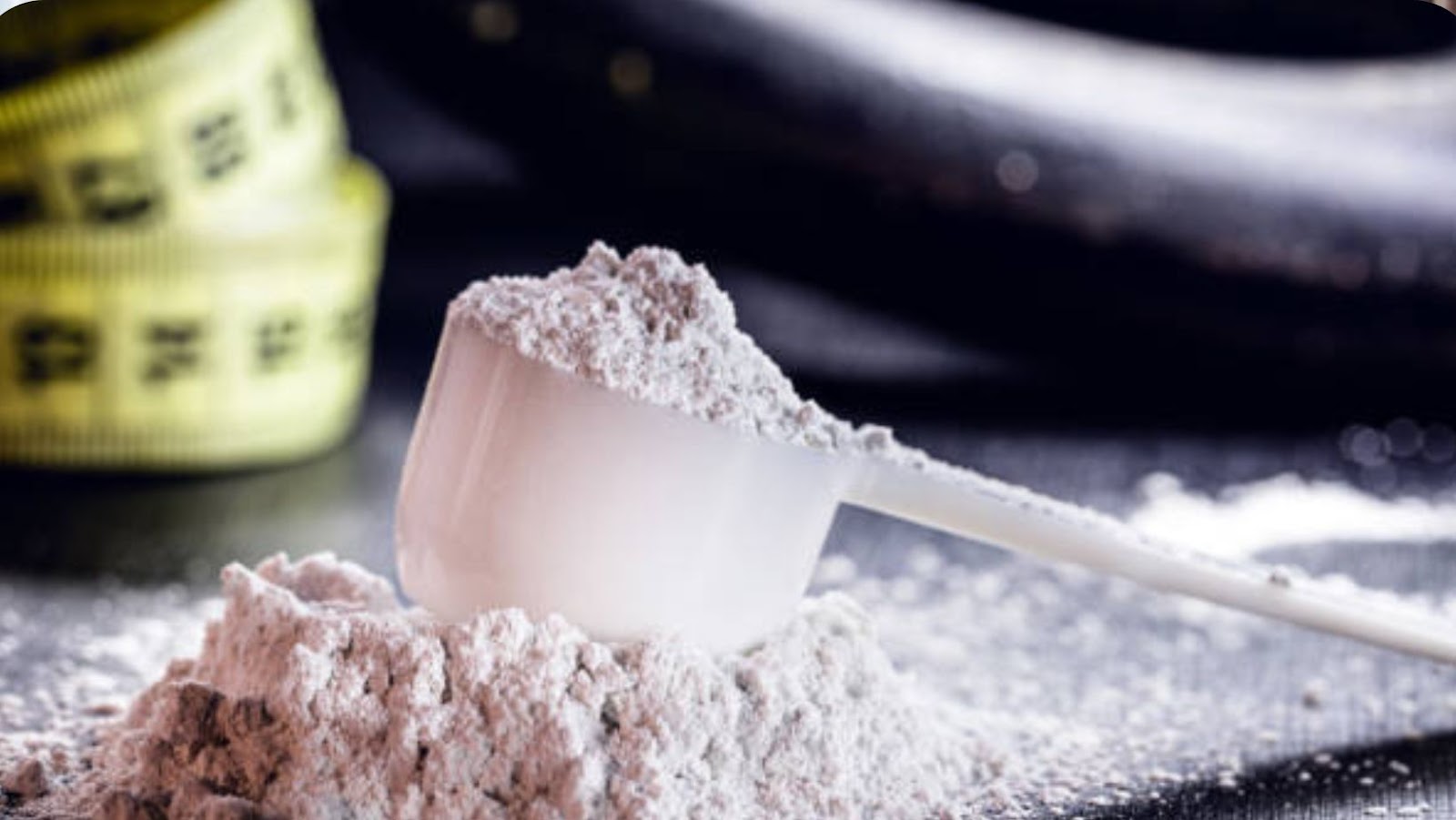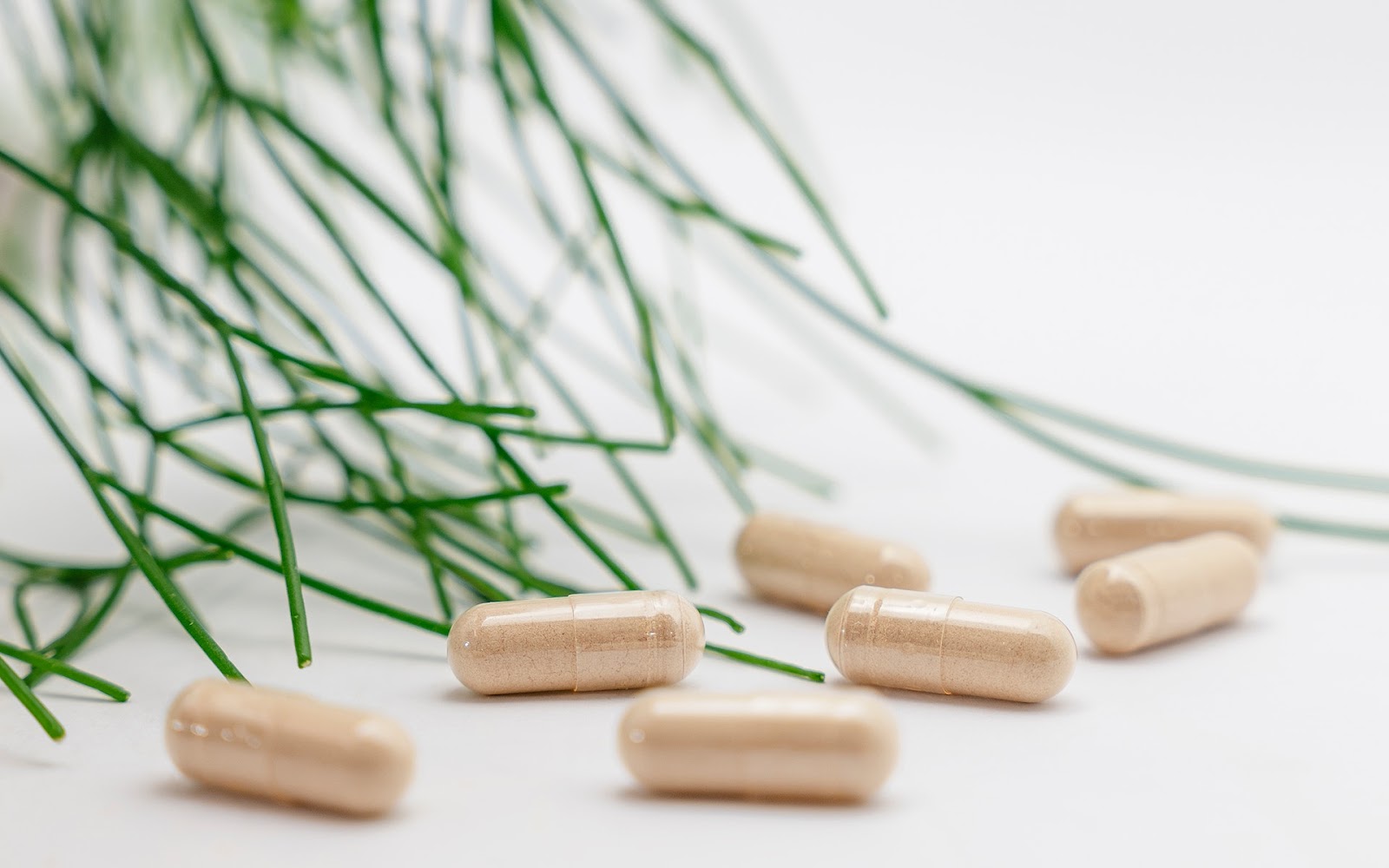
Whey protein is a popular dietary supplement used for muscle growth and repair. It is available in various forms, including concentrate, isolate, and hydrolysate.
- Concentrate protein powders offer the most affordable option with 70-80% protein content.
- Isolate protein powder has higher purity with 90% or more protein content.
- Hydrolysate proteins are pre-digested for fast absorption and are ideal for post-workouts.
Both animal and human studies have demonstrated that whey protein helps with weight loss, muscle building, and reducing inflammation [Source: NCBI].
Why settle for one type of whey protein when you can have a whey-ll-rounded diet?
Does Whey Protein Have Gluten
As consumers aim to take their fitness and health goals seriously, the question about the different types of whey protein is becoming more relevant. Whey protein is a mixture of proteins isolated from whey, a byproduct of cheese made from cow’s milk. There are various types of whey protein available in the market designed for different needs such as muscle building, weight loss, or a supplement for a vegetarian diet.
One way to understand the different types of whey protein is to categorize them by how they are processed. There are three main types of whey protein: concentrate, isolate, and hydrolysate. Whey protein concentrate is the most commonly found and affordable in the market. It contains low levels of fat and carbohydrates and is made by filtering the protein from the lactose and fat in whey. Whey protein isolate undergoes further processing to eliminate the lactose, fat, and carbohydrates. It is considered a purer form of protein and also more expensive than whey protein concentrate. Hydrolysate is pre-digested whey protein that has been further broken down into peptides for quick absorption.
It’s vital to note that whey protein can also come from grass-fed cows, which can be a more valuable source of whey protein. This type of whey protein is rich in conjugated linoleic acids that can aid in weight loss, reduce inflammation, and enhance insulin sensitivity. It is an excellent option for individuals who prioritize the quality of the protein source.
A college athlete who consumed the wrong type of whey protein supplement experienced a detrimental effect on their health. It emphasized the importance of researching and selecting the right type of whey protein supplement for a specific goal or need. It’s essential to consider the quality of the source, the processing method, and any possible side effects before purchasing a whey protein supplement.
Why settle for a basic protein shake when you can upgrade to WPC and feel like a ripped, muscular version of yourself?
Whey Protein Concentrate (WPC)
Whey protein extract that has undergone filtration is called Whey Protein Concentrate (WPC). It is a widely used dietary supplement and a rich source of essential amino acids. WPC contains approximately 70-80% protein content per serving, making it a cost-effective option for those looking to build muscle mass.
It has the following benefits:
- Contains low levels of fat and lactose.
- Faster absorption rate compared to casein protein.
- Provides effective weight management by increasing satiety levels.
- Maintains ideal nitrogen balance in the body, essential for protein synthesis.
- Aids in the prevention and treatment of age-related muscle loss also called sarcopenia.
- Clinically proven to reduce blood pressure levels if consumed regularly.
Interestingly, WPC supplements can be formulated using different methods. They may vary in terms of purity, composition and processing techniques employed by manufacturers.
Pro Tip: Consult with your healthcare provider before consuming any dietary supplements, including WPC.
Get ready to beef up your protein knowledge as we dive into the definition of WPC – and no, it’s not a new rap group.
Definition of WPC
Whey protein concentrate (WPC) is a concentrated form of whey protein that is extracted during the cheese-making process. It contains approximately 70-80% protein and can be further processed to remove excess fats and lactose, resulting in higher protein contents.
A table comparing different types of WPC could include columns such as percentage of protein, lactose content, fat content, and processing method. For example, WPC 80 might have 80% protein, 5-6% lactose, and 1-5% fat, while WPC 35 might have only 35% protein but higher lactose and fat contents.
One unique aspect of WPC is its ability to support muscle growth and repair due to its high branched-chain amino acid content. Additionally, it has been shown to improve immune function and reduce inflammation.
The origins of whey protein concentrate date back to the early days of cheese-making when cheesemakers began separating liquid whey from curds. As demand for a concentrated form of whey protein grew in the health and fitness industry, manufacturers began processing WPC through microfiltration or ultrafiltration techniques to obtain products with higher levels of purity and nutritional value. Why settle for just regular muscles when you can have whey-powered, protein-packed, biceps of steel?

Benefits of WPC
Whey Protein Concentrate (WPC) provides numerous benefits that improve overall well-being. The highly concentrated mixture of proteins, amino acids, and other nutrients make it a popular choice among athletes, bodybuilders, and fitness enthusiasts alike.
| Benefits of WPC | Description |
| 1. Building Muscle Strength | WPC is known to help build muscle strength and enhance the recovery process after intense workouts. |
| 2. Boosting Immunity | The immune-boosting properties of WPC can help protect against various infections and illnesses. |
| 3. Promoting Weight Loss | Including WPC in your diet may contribute to weight loss by increasing satiety levels and reducing overall caloric intake. |
It should be noted that not all WPCs are created equal. Factors such as protein content, processing methods, and source quality greatly affect the nutritional value of a given product.
For those seeking the maximum potential with their protein supplement regimen, it is worth considering higher-grade products containing advanced microfiltration techniques for increased purity.
Don’t let suboptimal protein supplements limit your training progress – invest in the right products to maximize your full potential.
Timing is everything, especially when it comes to getting the most out of your WPC. Find out when to chug that protein shake like a boss.
When to take WPC
Whey protein concentrate consumption can improve muscle growth and recovery. For optimum results, one must know the appropriate time to take it. Here are some suggestions.
| Time | Description |
| Morning | Increase protein synthesis throughout the day and improve overall muscle health. |
| Pre-Workout | Boost energy levels, reduce fatigue, increase focus and strength, and prevent muscle damage. |
| Post-Workout | Replenish lost nutrients, promote faster muscle recovery, reduce soreness and inflammation, and enhance lean muscle mass. |
| Night-time | Aids in repairing damaged muscles while sleeping through a sustained release of amino acids. |
For optimal results and maximum benefits of whey protein concentrate, it is essential to consume it at the right times without exceeding the recommended daily intake.
Research has shown that consuming WPC immediately after workouts helps promote faster muscle recovery by restoring glycogen levels depleted by intense exercise. However, consuming it before sleep is also beneficial because the body spends about a third of its day asleep during which tissue repair occurs.
One interesting fact to note about whey protein is that it was discovered in by-products of cheese-making dating back to ancient times. Whey was initially discarded as waste until people discovered its nutritional value centuries later, resulting in changing how we now approach fitness diets.
Why settle for regular protein when you can isolate yourself with Whey Protein Isolate?
Whey Protein Isolate (WPI)
Whey protein isolate is a highly-refined form of whey protein that has been processed to increase its purity. It typically contains over 90% protein by weight, with minimal amounts of lactose and fat. This type of whey protein is ideal for individuals who are lactose intolerant or have trouble digesting regular whey protein concentrate.
In addition to being a high-quality source of protein, whey protein isolate also provides essential amino acids that support muscle growth and recovery. It can be easily mixed into shakes or eaten as a snack, making it a convenient option for athletes and fitness enthusiasts alike.
One unique aspect of whey protein isolate is its high leucine content, an amino acid that plays a crucial role in triggering muscle protein synthesis. This makes it an effective supplement for post-workout recovery and muscle building.
For optimal results, it’s recommended to consume whey protein isolate within 30 minutes of completing an exercise session. Additionally, incorporating resistance training into your fitness routine can further enhance the benefits of this type of protein supplement.
To get the most out of your whey protein isolate, consider consulting with a registered dietitian or certified sports nutritionist who can help you develop a personalized plan based on your individual needs and goals.
Get ready to feel the whey with WPI, the protein powder that’s so pure it makes the Kardashians jealous.
Definition of WPI
WPI is a type of whey protein that has undergone further processing to remove lactose, fat and other impurities. It contains high amounts of protein and low amounts of carbohydrates and fat.
| Definition | Highly processed form of whey protein with low lactose, fat and impurities. |
| Composition | Contains at least 90% protein by weight with minimal carbohydrates and fat. |
| Benefits | Rapid absorption in the body leading to increased muscle growth and recovery. |
Additionally, WPI is considered more expensive compared to other types of whey protein due to its high purity level. However, it is still a popular choice among athletes and fitness enthusiasts who prioritize quality sources of protein for their diet.
A personal trainer once shared a story about recommending WPI to one of his clients who had trouble meeting their daily protein intake goal. After incorporating WPI into his diet, the client noticed significant improvements in their muscle growth and overall performance in the gym. Get your gains and your giggles with WPI, the protein powder that’s more effective than a dad joke at the gym.

Benefits of WPI
WPI is a highly beneficial supplement for those seeking to increase muscle mass, improve athletic performance, and optimize health goals.
- WPI contains high levels of protein per serving, which aids in muscle growth and repair.
- The low lactose content in WPI makes it an ideal supplement for individuals who are lactose intolerant.
- WPI is quickly absorbed by the body, making it an excellent choice as a post-workout recovery supplement.
- Studies suggest that consuming WPI may also help with weight loss goals due to its satiating effects.
It’s important to note that while WPI boasts numerous benefits, it should not be the sole source of nutrition and all dietary needs should be met through whole foods.
Don’t miss out on the benefits of WPI! Incorporate this supplement into your fitness routine for optimal results.
WPI before bed? Sure, if you want to dream about gains all night long.
When to Take WPI
WPI is most effective when taken at the right time. To optimize results, it’s important to understand the best timing for consumption.
- Take WPI immediately after a workout to help with post-workout recovery and protein synthesis.
- Consuming WPI in the morning can help stimulate protein synthesis and minimize muscle breakdown throughout the day.
- Take WPI 30 minutes before a meal to help reduce overall calorie intake and promote feelings of fullness.
- Before bed, consuming WPI can help prevent overnight catabolism and assist with muscle repair during sleep.
It’s important to note that individual needs may vary, so adjusting intake times based on personal goals and activity levels can be beneficial.
Pro Tip: Mixing WPI with water or a low-fat milk alternative can aid in digestion and absorption.
Hydrolyzed Whey Protein: because sometimes you just need a protein that’s been broken down more than your last relationship.
Hydrolyzed Whey Protein (HWP)
This type of whey protein is the product of a process that breaks down larger proteins into smaller peptides, allowing faster digestion and absorption of amino acids.
- Hydrolyzed Whey Protein (HWP) is often marketed to athletes and bodybuilders as a premium protein source.
- It has a higher price point than regular whey protein due to the more complex manufacturing process.
- HWP is believed to be more easily absorbed by the body, making it an excellent choice for post-workout recovery.
- It is also said to contain fewer allergens than other types of whey protein since it has undergone substantial processing.
Although this protein powder is generally considered safe, some people who are sensitive to dairy or soy may experience adverse reactions. Give your body time to adjust when trying HWP for the first time.
An example of how HWP can help an athlete comes from Olympic gold medalist swimmer Michael Phelps who reportedly consumed up to 12,000 calories per day during his training. Among the dietary supplements he took was Hydrolyzed Whey Protein, which helped him meet his daily protein needs while keeping his calorie intake high enough to fuel his rigorous training schedule.
Before you dive into the world of whey protein, let’s get one thing straight – HWP does not stand for ‘Hot Wheels Party’.
Definition of HWP
Whey protein is a popular nutritional supplement that has several health benefits. It is a combination of proteins, minerals, and vitamins that are extracted from milk during the cheese-making process. This article focuses on the different types of whey protein available in the market.
A table summarizing the different types of whey protein:
| Types of Whey Protein | Description |
| Whey Protein Concentrate (WPC) | Contains lower levels of fat and lactose compared to other forms of whey protein. It provides a balanced ratio of amino acids and is cost-effective. |
| Whey Protein Isolate (WPI) | Contains more than 90% pure protein with minimal amounts of fat and lactose. It helps in building lean muscle mass while aiding in weight loss. |
| Hydrolysed Whey Protein (HWP) | Predigested form of whey protein that results in faster absorption by the body. It aids muscle recovery post-workout and helps meet daily nutritional needs for those with digestive issues such as lactose intolerance or celiac disease |
It should be noted that hydrolysed whey protein may sometimes cause an allergic reaction due to its fast digestion process.
Whey Protein Isolate was first introduced in the late 1990s as an alternative to WPC because it contains higher levels of proteins per serving. Since then, manufacturers have focused on improving processing techniques to create more effective forms such as hydrolysed whey protein, offering unique benefits for users’ needs.
Understanding the differences between various forms of whey protein can help consumers make informed decisions when purchasing supplements that cater to their specific fitness goals and dietary requirements.
Why settle for regular gains when you can have whey-ghtlifting superpowers?

Benefits of HWP
Whey protein is enriched with various benefits that are essential for a healthy body. The intake of this protein enhances muscle growth, aids in weight loss, reduces inflammation, regulates blood sugar levels, and promotes rapid recovery after exercise.
The benefits of HWP can be better understood through a tabular representation. Refer to the following table:
| Benefit | Description |
| Muscle growth | Rich in amino acids which helps to rebuild muscle tissue faster |
| Weight loss | Promotes feeling of fullness, thus reducing calorie intake |
| Reduces inflammation | Contains anti-inflammatory properties |
| Regulates blood sugar levels | Rich in proteins that regulate insulin secretion |
| Rapid recovery after exercise | Speeds up recovery process by repairing muscles faster |
It’s important to note that whey protein is available in various forms like concentrate, isolate and hydrolysate which have different absorption rates and nutrient breakdowns.
With its diverse range of benefits and formulations, it’s no surprise that HWP has become a popular supplement among fitness enthusiasts. According to a study published in the Journal of Sports Science & Medicine, whey protein supplementation significantly improves muscular strength and size when combined with regular resistance training.
Research has also shown that HWP consumption leads to an increase in fat-free mass while potentially reducing body fat percentage. Its benefits extend beyond muscle building as it’s also been linked to improved immune function and cardiovascular health.
When to take HWP? Whenever you need a protein boost, or just want an excuse to chug a delicious shake.
When to Take HWP
Knowing the opportune moment to consume High-quality Whey Protein can further facilitate augmenting your health goals. Timely ingestion of the protein supplement can optimally support muscle repair, promote fat loss and improve energy levels. Here’s a 6-step guide that can serve as a blueprint for strategically taking HWP.
- Post-Workout: Immediately consuming HWP after exercise significantly enhances recovery due to its fast absorption rate and ability to repair muscle tissue.
- Breakfast: Adding HWP in shakes or smoothies during breakfast promotes sustained satiety and appetite suppression throughout the day.
- Before Bedtime: Taking casein protein such as Micellar casein before bed dissuades catabolism by producing slow-release amino acids overnight.
- Prior to Meals: Pre-meal intake of whey protein leads to greater feelings of fullness, consequently reducing meal intake and promoting weight loss.
- Snacking: Incorporating whey protein rich snacks like bars or crackers besides meals can supply additional nutrients without sabotaging daily calorie budgets.
- Athletes & Bodybuilding Competitions: Athletes and bodybuilders supplement with whey protein powder in between meals to maintain lean muscle mass or gain size respectively.
While it may be noted that individual dietary needs vary from person to person, these general guidelines will help one better adapt their usage of HWP. It is important not to exceed recommended daily consumption as it may produce adverse effects.
Fun Fact- In 1985, a team led by Dr. Peter Lemon unveiled the “window of opportunity.” This theory explains the crucial importance of timing nutrient intake as your muscles use up more amino acids right after resistance training than when they’re at rest.
Avoid a protein powder identity crisis and choose the right whey to slay.
Conclusion: Choosing the Right Type of Whey Protein
Choosing the appropriate whey protein is vital for achieving optimal results. To help select the right type, here’s a breakdown of common whey protein types and their benefits.
| Type of Whey Protein | Description | Benefits |
| Whey Protein Concentrate | Contains 70-80% protein, varying amounts of lactose & fat, and has a creamy texture | Cost-effective, muscle building/recovery support |
| Whey Protein Isolate | 90%+ protein, almost no lactose or fat content, fast-absorbing | Ideal for lactose intolerant individuals and weight loss goals |
| Hydrolysed Whey Protein | Pre-digested form with enhanced absorption rates | Muscle recovery support, fast absorption |
Considering individual nutrition needs is key to selecting the appropriate whey protein type. While selecting a product, keep in mind factors such as dietary restrictions and weight management goals.
It is important to note that while all three types of whey mentioned above offer unique benefits depending on individual nutrition goals, they are not magic pills. It’s essential to follow a balanced diet plan along with regular exercise routines for optimal performance.